Another hotel, another fire door problem. In case you’re new to this site…this fire door needs a positive latch, and will not perform as designed and tested to protect the stairwell as a means of egress for the hotel guests if there is a fire. Unacceptable!
Thank you to Logan Piburn of Dyron Murphy Architects for the photos!
You need to login or register to bookmark/favorite this content.

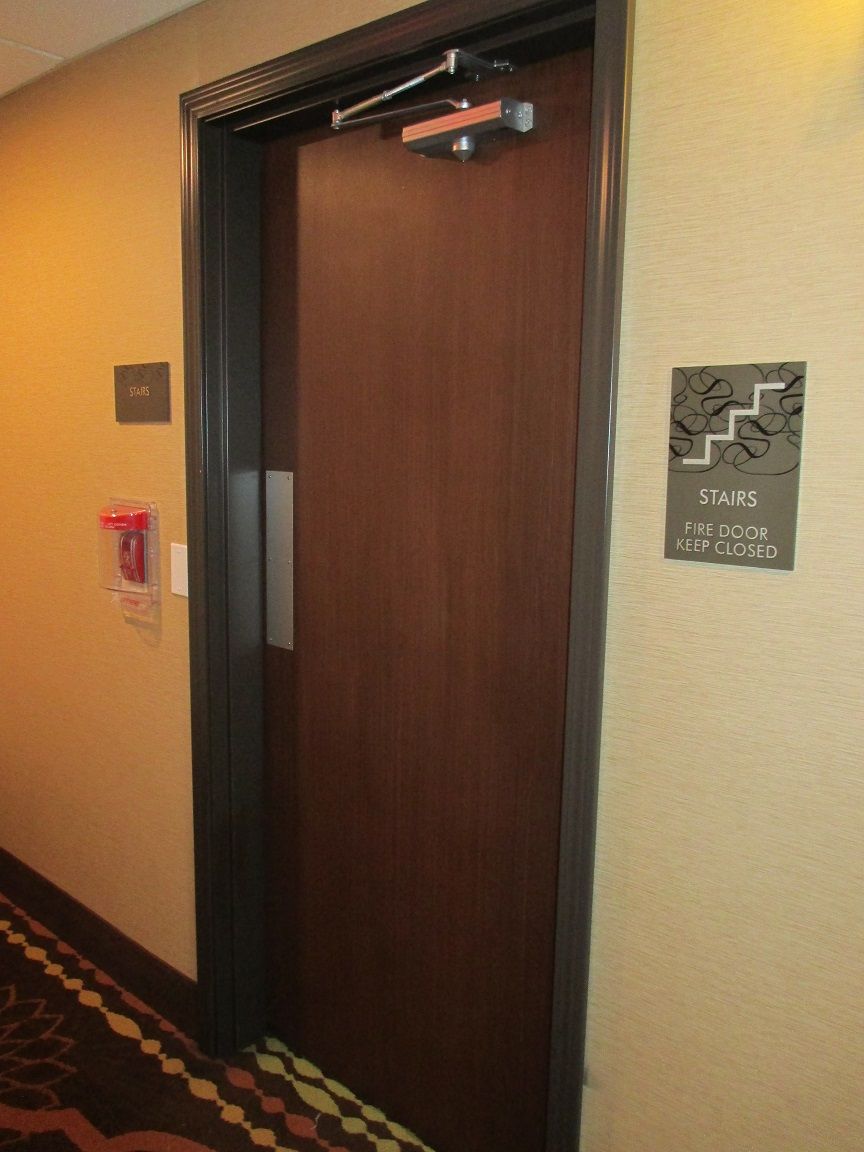
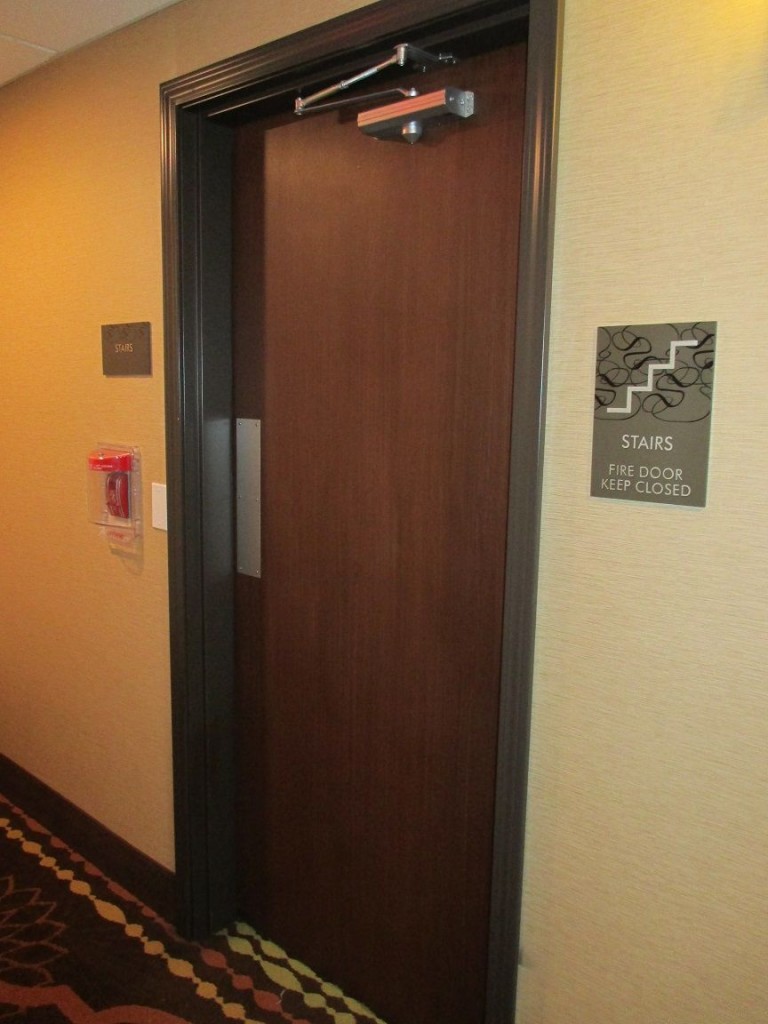
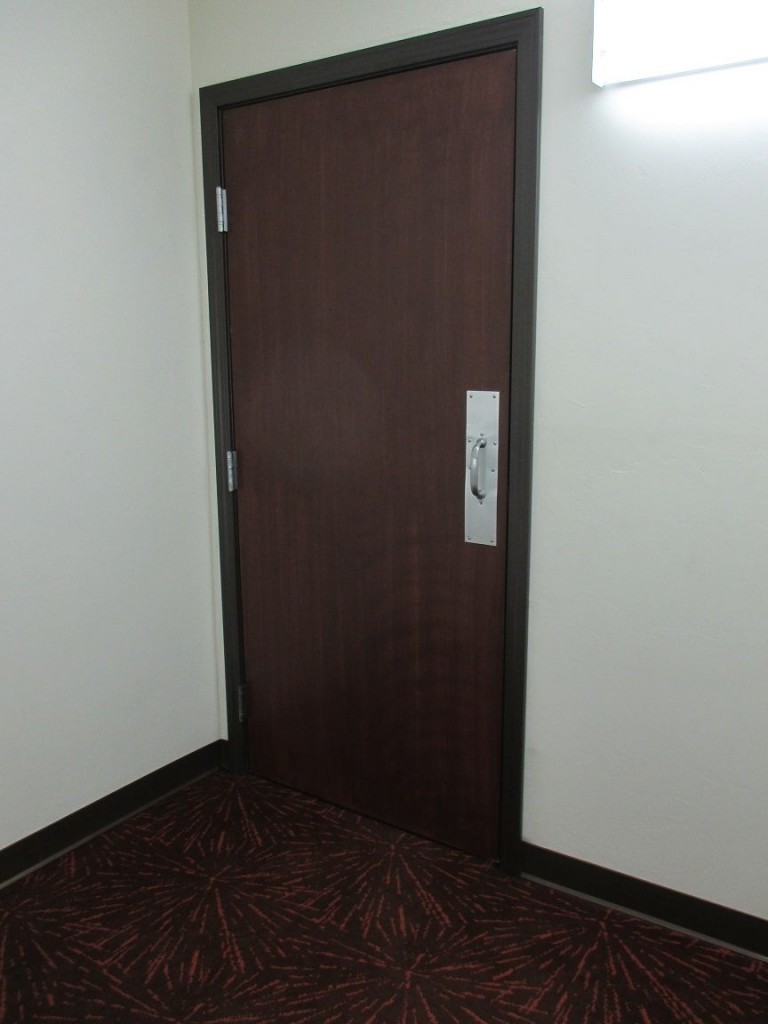
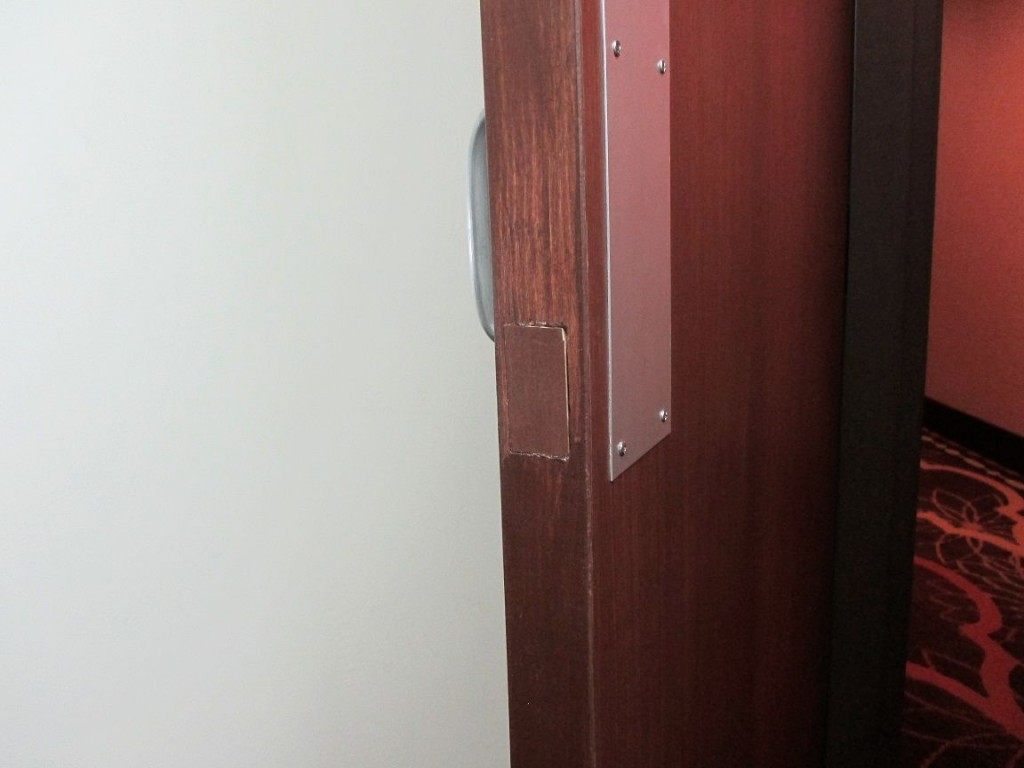
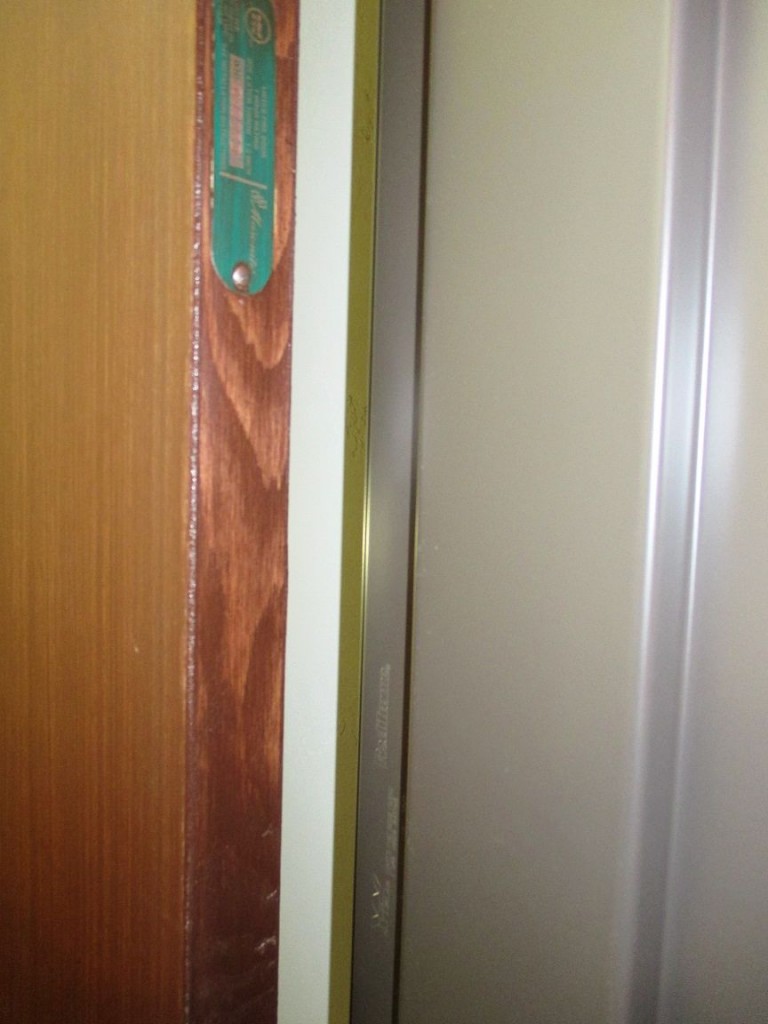




How did they get away with that??
Surprised there is not a flop down door stop so door could be held open
How old is this door that it was ever ok with a cylindrical latch instead of an exit device. It looks like a new replacement door that has never been prepped for an exit device and all that they got right was the label.
If it’s just serving hotel rooms (no Assembly space), then it would not require panic hardware because it is not an Assembly or Educational occupancy.
Scary…..
I had a tech almost do this one day in a high rise office bldg stairwell… I asked him why he wanted push/pull plates for the job he was going on… He said the lock was broken and this was cheaper than a new lock… Then he added that other doors had already been “converted” to this. Ahhhh!
I think at times people believe that this makes it EASIER to exit in a panic but they obviously arent aware of the need for the door to latch and that doors really will blow open from the heat.
This is a part of the code I have never agreed with. These doors are the exit path for more than 50 people in most cases and cylindrical locks are just less reliable. I am sure we have all seen a repair completed by an in house maint. man using a “Big Box Store” P O J lock on a hotel stair door. Not a UL listed lock, but just a grade two Taiwan special. Just my humble opinion, but exit devices would be a better choice.
Rich,
They might have only had a latch with no lock. There would be no reason to put a lockset on the stairwell in the first place for this application.
Logan, you are correct. My meaning was passage function but I failed to communicate that little detail. I used “lock” as a generic term ignoring function, but I still prefer an exit device for long term reliability.
What does an inspector do with IFC 703.2.3 which requires fire doors to close and latch? It’s easy here where the latch was removed. But what about labeled fire doors installed 40 years ago that never had a latch? Did NFPA 80 ever allow fire doors that merely swing shut without a latching mechanism?
There must have been an exception somewhere, because I’ve seen a lot of non-latching fire doors in older schools. I’m away right now, but I have an old edition of NFPA 80 at home and I’ll check when I get back and let you know.
– Lori
Inspection and Testing – While the 2007 and 2010 editions of NFPA 80 require documented inspection and testing of fire door assemblies annually, the 2013 edition includes additional requirements for the inspection and testing of door, shutter, and window assemblies upon completion of their installation (5.2.1), and also upon completion of maintenance work on fire door assemblies (5.2.2.5).
• When a building code references the 2013 edition of NFPA 80, newly-installed fire door assemblies must be inspected and tested.
• When fire door assemblies are repaired and the governing code references NFPA 80-2013, the assemblies must be inspected and tested immediately upon completion of the work to ensure that they are in compliance with NFPA 80.
• When a fire code references the 2007, 2010, or 2013 editions of NFPA 80 for maintenance of fire doors, all fire door assemblies must be inspected and tested annually.
I think be fun to test these doors – what do all you think ???